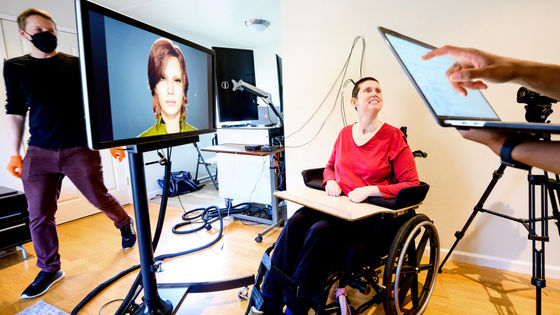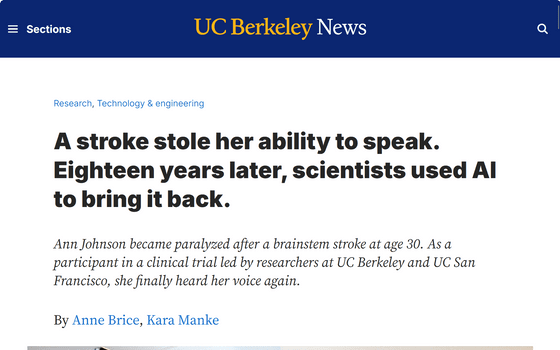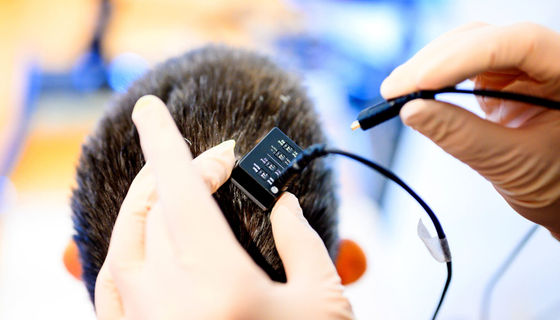Woman who lost the ability to speak after a stroke regains her communication skills with the help of AI

Researchers at the University of California, Berkeley and the University of California, San Francisco, have succeeded in converting electrical signals from a woman who had suffered a brainstem stroke and was unable to speak into words. The research has reportedly progressed further, significantly shortening the delay compared to the initial study.
A stroke stole her ability to speak. Eighteen years later, scientists used AI to bring it back. - Berkeley News

Brain-to-voice neuroprosthesis restores naturalistic speech - Berkeley Engineering
Ann Johnson, who taught math and physical education at a high school in Saskatchewan, Canada, and coached volleyball and basketball, led a busy life. She suffered a brainstem stroke while playing volleyball with a friend, and at the age of 30, she lost most of her ability to speak and move her muscles.
Johnson suffered from a condition called locked-in syndrome, which is characterized by almost complete paralysis and the loss of natural communication skills. His mouth wouldn't move and he couldn't speak. Over time, he regained the ability to move his neck, cry, and laugh, but he still couldn't speak and communicated using an eye-tracking system.
But 18 years later, Johnson regained his ability to speak after participating in a clinical trial conducted by researchers at UC Berkeley and UC San Francisco.
A technology that lets you speak from an avatar just by thinking about it has emerged, and a woman who lost her ability to speak after a stroke regains her voice and facial expressions with the power of 253 electrodes and AI - GIGAZINE

Researchers are conducting clinical trials using a brain-computer interface (BCI), which reads information from the language-processing part of the brain, and Johnson joined as the third subject in 2022.
The researchers had Johnson choose his own avatar and recreated his voice using a recording of a wedding speech he gave. They then implanted an implant in the language-processing area of his brain and asked him to read aloud a passage. The AI processed the signals emitted from his brain and translated them into actual words, and the avatar produced facial expressions.

You can see Johnson speaking in the video below.
When this test was conducted in 2023, there was an eight-second delay between reading brainwaves and converting them into words, which was far from fluent. However, new research published in March 2025 revealed that this delay had been dramatically reduced to just one second.
This allows the subject's thoughts to be translated into words in near real time, and the continuous conversion process allows for continuous speech without interruption.
According to the researchers, the device used in the test only reads 'neural activity associated with speaking,' so it doesn't actually peek into a person's thoughts. 'We weren't trying to read her mind,' said Gopala Anumanthipalli, a co-author of the study. 'It only worked when she was trying to say something.'

In February 2024, Johnson had the implants removed for reasons unrelated to the study, but remains in contact with the research team. Johnson said he enjoyed hearing his own voice and hopes to one day become a counselor at a rehabilitation facility, ideally using neurally activated prosthetic limbs to communicate.
Researchers are exploring ways to reflect changes in tone, pitch, and volume that occur during conversation, such as when a speaker becomes excited, as well as ways to make BCIs wireless.
Related Posts:






